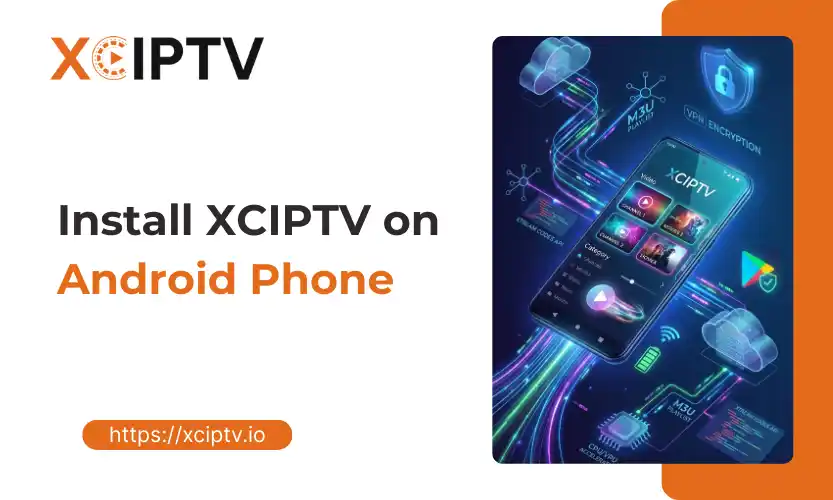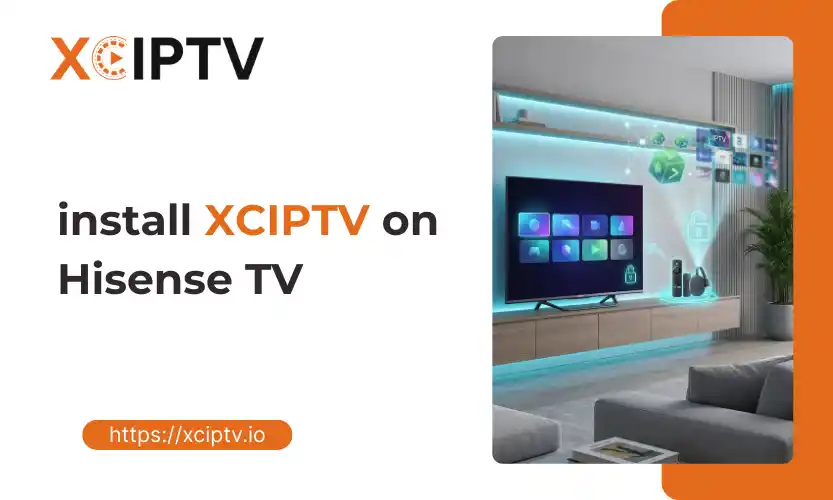The way we watch television has changed dramatically over the years. Internet Protocol Television (IPTV) has emerged as a popular alternative to traditional cable and satellite TV. But how does IPTV work on TV? This guide will walk you through the technology, components, and processes that make IPTV possible on your television screen.
Understanding IPTV
What is IPTV?
IPTV stands for Internet Protocol Television. It’s a method of delivering television content over Internet Protocol (IP) networks. Unlike conventional TV broadcasting, IPTV sends video content through your internet connection. This technology allows for more interactive and personalized viewing experiences.
How does IPTV differ from traditional TV?
Traditional TV broadcasts content in real-time, and you tune in to watch specific programs at set times. On the other hand, IPTV sends content directly to you when you request it. This on-demand nature is one of the critical differences in how IPTV works on TV compared to traditional broadcasting methods.
The Technology Behind IPTV
To understand how IPTV works on TV, we need to look at the underlying technology:
1. IP Networks
IPTV relies on IP networks to transmit data. These networks use the same protocols as the internet, allowing for efficient data transfer and two-way communication between the service provider and your TV.
2. Streaming Protocols
IPTV uses various streaming protocols to deliver content:
- HTTP Live Streaming (HLS): Widely supported and works well with adaptive bitrate streaming.
- Dynamic Adaptive Streaming over HTTP (DASH): An open standard gaining popularity.
- Real-Time Messaging Protocol (RTMP): Often used for live streaming.
These protocols ensure smooth playback on your TV, adapting to your internet speed and network conditions.
3. Video Compression
To efficiently transmit high-quality video over the internet, IPTV services use advanced compression techniques. Common codecs include:
- H.264/AVC
- H.265/HEVC
- VP9
These codecs significantly reduce file sizes without noticeably compromising video quality.
How IPTV Reaches Your TV
Now that we’ve covered the basics let’s explore how IPTV actually works on your TV:
1. Content Source
IPTV content comes from various sources:
- Live TV channels
- Video-on-demand (VOD) libraries
- User-generated content platforms
Providers acquire this content through licensing agreements, partnerships, or their production.
2. Content Preparation
Before transmission, the content goes through several steps:
- Encoding: Video is compressed using the codecs above.
- Encryption: Content is secured to prevent unauthorized access.
- Metadata Addition: Information like titles, descriptions, and thumbnails is attached.
3. Content Storage and Distribution
Encoded and encrypted content is stored on servers. For efficient delivery, IPTV providers use Content Delivery Networks (CDNs). These distributed network servers ensure that content is delivered from locations close to the end-user, reducing latency and improving streaming quality.
4. User Request
When you select a program on your TV, your IPTV device requests the provider’s servers.
5. Content Delivery
The requested content is then streamed to your device over the internet. This is where the streaming protocols come into play, ensuring smooth delivery and playback.
6. Decoding and Display
Finally, your IPTV-enabled device (smart TV or set-top box) decodes the received signal and displays the content on your TV screen.
IPTV Devices: How Does IPTV Work on TV Hardware?
To use IPTV on your television, you’ll need one of the following:
1. Smart TVs
Many modern smart TVs have built-in IPTV capabilities. They can connect directly to the internet and run IPTV apps without additional hardware.
2. Set-Top Boxes
These dedicated devices connect to your TV and internet, providing IPTV functionality to non-smart TVs. Popular options include:
- Apple TV
- Roku
- Amazon Fire TV Stick
3. Game Consoles
Many gaming consoles like PlayStation and Xbox can also run IPTV apps.
4. IPTV Boxes
Specialized IPTV boxes are explicitly designed for IPTV services and often come pre-loaded with IPTV software.
User Interface and Experience
A crucial part of how IPTV works on TV is the user interface. IPTV platforms typically offer:
- Electronic Program Guides (EPG)
- Search functionality
- Personalized recommendations
- Recording and time-shifting features
These elements make navigating and enjoying IPTV content on your TV intuitive and user-friendly.
Types of IPTV Services
Understanding how IPTV works on TV involves knowing the different types of services available:
1. Video on Demand (VOD)
This allows you to select and watch content whenever you want, similar to streaming services like Netflix.
2. Live IPTV
This mimics traditional TV broadcasting, allowing you to watch live channels online.
3. Time-Shifted TV
This feature lets you pause, rewind, fast-forward live TV or watch previously aired content.
Network Requirements
You need a stable and fast internet connection for IPTV to work well on your TV. The recommended speeds vary based on the quality of the video you’re streaming:
- SD quality: 3-4 Mbps
- HD quality: 5-8 Mbps
- 4K quality: 25 Mbps or higher
Benefits of IPTV on TV
Now that we’ve explored how IPTV works on TV, let’s look at some benefits:
- On-Demand Viewing: Watch what you want, when you want.
- Interactive Features: Enjoy a more engaging TV experience.
- Multi-Device Support: Start watching on your TV, and continue on your phone.
- Personalization: Get recommendations based on your viewing habits.
- Cost-Effective: Often cheaper than traditional cable or satellite packages.
Challenges and Considerations
While IPTV offers many advantages, it’s not without challenges:
1. Internet Dependence
Your TV viewing experience relies on your internet connection. Poor internet can lead to buffering or low-quality streams.
2. Latency
Live IPTV streams may have a slight delay compared to traditional broadcasts.
3. Content Availability
The content available through IPTV services can vary based on licensing agreements and your location.
4. Technical Know-How
Setting up and troubleshooting IPTV may require more technical knowledge than traditional TV setups.
The Future of IPTV on TV
As technology evolves, so does IPTV. Here are some trends shaping the future of how IPTV works on TV:
1. 5G Integration
The rollout of 5G networks promises faster, more reliable IPTV streaming, potentially eliminating buffering and latency issues.
2. AI and Machine Learning
These technologies will enhance content recommendations and user interfaces, making your TV viewing experience even more personalized.
3. 4K and 8K Streaming
As internet speeds increase, ultra-high-definition content will become more common on IPTV platforms.
4. Virtual and Augmented Reality
IPTV platforms may integrate VR and AR features, creating more immersive viewing experiences.
Conclusion
Understanding how IPTV works on TV involves grasping a complex interplay of technologies, from streaming protocols to user interfaces. As IPTV continues to evolve, it’s reshaping how we consume television content, offering more flexibility, interactivity, and personalization than ever before.
As internet infrastructure improves and IPTV technology advances, we expect even more innovative features and higher-quality viewing experiences. IPTV brings a world of content to your TV screen, all at the touch of a button. It’s not just changing how we watch TV; it’s redefining what television can be.




